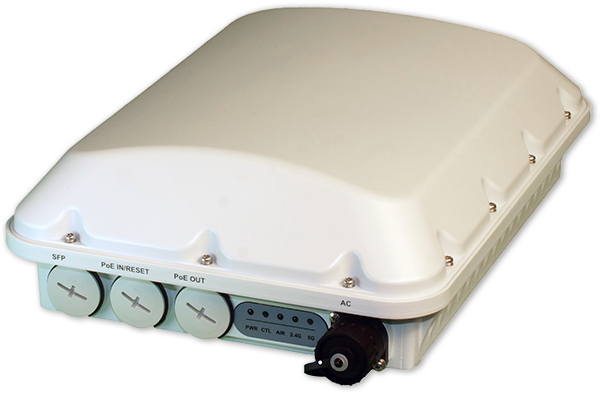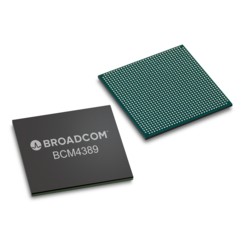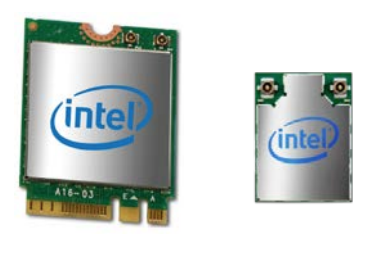This post is part of a series highlighting key technologies in Wi-Fi CERTIFIED Vantage™ – a Wi-Fi Alliance® solution making it easy for devices to provide an elevated experience in managed Wi-Fi® networks.
Wi-Fi CERTIFIED Optimized Connectivity™ is one of these key technologies, optimizing device discovery of Wi-Fi and roaming between access points in the same or different Wi-Fi networks.
Wi-Fi CERTIFIED Optimized Connectivity™—a key piece of the Wi-Fi CERTIFIED Vantage™ program—enables users to experience quality connections throughout their roaming experience. Wi-Fi Optimized Connectivity™ extends the benefits of Wi-Fi CERTIFIED Agile Multiband™, another component of Wi-Fi CERTIFIED Vantage, to include features that optimize the process of discovering Wi-Fi networks, establishing initial connectivity, and roaming between different access points (APs) in the same or different Wi-Fi networks, as well as between Wi-Fi and cellular networks.
In busy environments such as train stations, dense urban centers, stadiums, shopping centers, entertainment venues, and hotels, Wi-Fi Optimized Connectivity features result in an improved user experience and allow network operators to maintain a high level of service.
Wi-Fi Optimized Connectivity provides more efficient spectrum management in congested environments
With its discovery enhancements, Wi-Fi Optimized Connectivity networks can prioritize which channels a device scans during the discovery process and can assist devices to more rapidly discover APs. Client devices can also associate, quickly pre-authenticate, and configure to send and receive packets within 100 milliseconds of entering the coverage area of a Wi-Fi AP that is certified for Wi-Fi Optimized Connectivity.
The user experiences a shorter network discovery and connection setup time for almost instant network access, and reduced airtime overhead. By reducing the management frame overhead, Wi-Fi Optimized Connectivity networks and client devices are able to provide more efficient connectivity sessions, as the client device has to spend less time sending or responding to network management traffic, and can spend more time moving user data.
Wi-Fi Optimized Connectivity improves roaming and network transitions within a single Wi-Fi network, as well as between different Wi-Fi networks by requiring APs to advertise metrics from which client devices can derive a link quality score for each AP and network. Wi-Fi Optimized Connectivity devices are also able to transition efficiently between Wi-Fi and cellular networks with Fast Initial Link Setup (FILS) authentication and fast transitions for almost seamless connectivity even in crowded environments, such as train stations, stadiums, and airports.
Use case: A crowded train station
One of Wi-Fi Optimized Connectivity’s key benefits is efficient transmissions, which is made possible by reducing management traffic. Wi-Fi Optimized Connectivity networks are especially useful in densely packed environments where multiple client devices are trying to access the network simultaneously.
Such congestion might occur in a crowded train station in Tokyo during the daily morning commute. In this scenario, thousands of device users arrive at the train station simultaneously. As they exit the train, many may attempt to call a family member or coworker, others may be streaming video, and still others may be using a variety of applications on their phones, tablets, or laptop computers.
As these commuters arrive at the train station, their devices automatically attempt to transition either from a pre-existing Wi-Fi network connection on the train itself or a cellular network, to the train station’s public Wi-Fi network. In a scenario where neither the network nor client devices are certified for Wi-Fi Optimized Connectivity the user may experience severe disruptions in their existing connections—for instance, dropped calls, intermittent or slow video streaming, and increased latency when accessing other applications. Such poor performance is due to inefficient management of available spectrum.
A CableLabs field trial tested just such a scenario, comparing Wi-Fi Optimized Connectivity devices with non-certified devices in a busy urban environment centered around a highly-trafficked subway station. Using Wi-Fi Optimized Connectivity features, the field trial results showed streamlined network discovery through the reduction in airtime traffic and overhead. A few of the highlights include a 76 percent decrease in connection setup times and a 50 percent savings in management frame airtime.
Wi-Fi CERTIFIED Optimized Connectivity devices
Among the devices that now proudly bear the distinction of the Wi-Fi CERTIFIED Optimized Connectivity certification are smartphones, access points (APs), and tablets. For instance, both Samsung and Ruckus have certified their respective flagship range of products for Wi-Fi CERTIFIED Optimized Connectivity. Among the Wi-Fi Alliance® members that have Wi-Fi CERTIFIED Optimized Connectivity devices are Broadcom, Intel, MaxLinear Inc., NXP Semiconductors, and Qualcomm, while hundreds of devices have been certified and the number continues to grow.
Samsung Galaxy S10 and S20 Series
Samsung's flagship range of smartphones, including the Galaxy S10 series and the Galaxy S20 series both feature Wi-Fi Optimized Connectivity. These phones promise to adapt to their surroundings, have a longer battery life, run more efficiently, and provide peak performance throughout the day. Wi-Fi CERTIFIED Optimized Connectivity helps ensure these smartphones quickly and efficiently connect to Wi-Fi when in range of network infrastructure devices.

Samsung Galaxy S10
Ruckus SmartZone Outdoor APs
Ruckus' enterprise-grade SmartZone range of outdoor APs also include Wi-Fi CERTIFIED Optimized Connectivity to ensure that mobile device users in outdoor locations such as stadiums and arenas can have a seamless connectivity experience despite the demanding wireless requirements due to high client density.

T750 Outdoor AP
Broadcom Wi-Fi 6E and Bluetooth 5 Combo Chipset with 6GHz/160MHz support
This Broadcom chipset, the BCM4389, is a low-power, highly integrated Wi-Fi 6E and Bluetooth 5 combo chip. The device is optimized for use in smartphones where high performance and low power consumption are key.

Broadcom BCM4389
Intel® Dual Band Wireless-AC 8265 Adapter
The Intel® Dual Band Wireless-AC 8265 adapter has passed the rigorous testing requirements of the Wi-Fi CERTIFIED Optimized Connectivity certification, ensuring users can efficiently connect to APs and network devices to provide a seamless connectivity experience. The adapter also provides up to 3x increase in user speeds in dense deployments, supporting fast downloads and a long battery life.

Intel Dual Band Wireless-AC 8265 Adapter
The statements and opinions by each Wi-Fi Alliance member and those providing comments are theirs alone, and do not reflect the opinions or views of Wi-Fi Alliance or any other member. Wi-Fi Alliance is not responsible for the accuracy of any of the information provided by any member in posting to or commenting on this blog. Concerns should be directed to info@wi-fi.org.




Add new comment